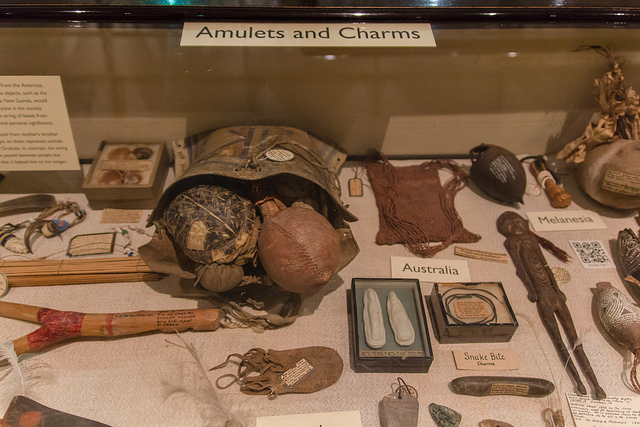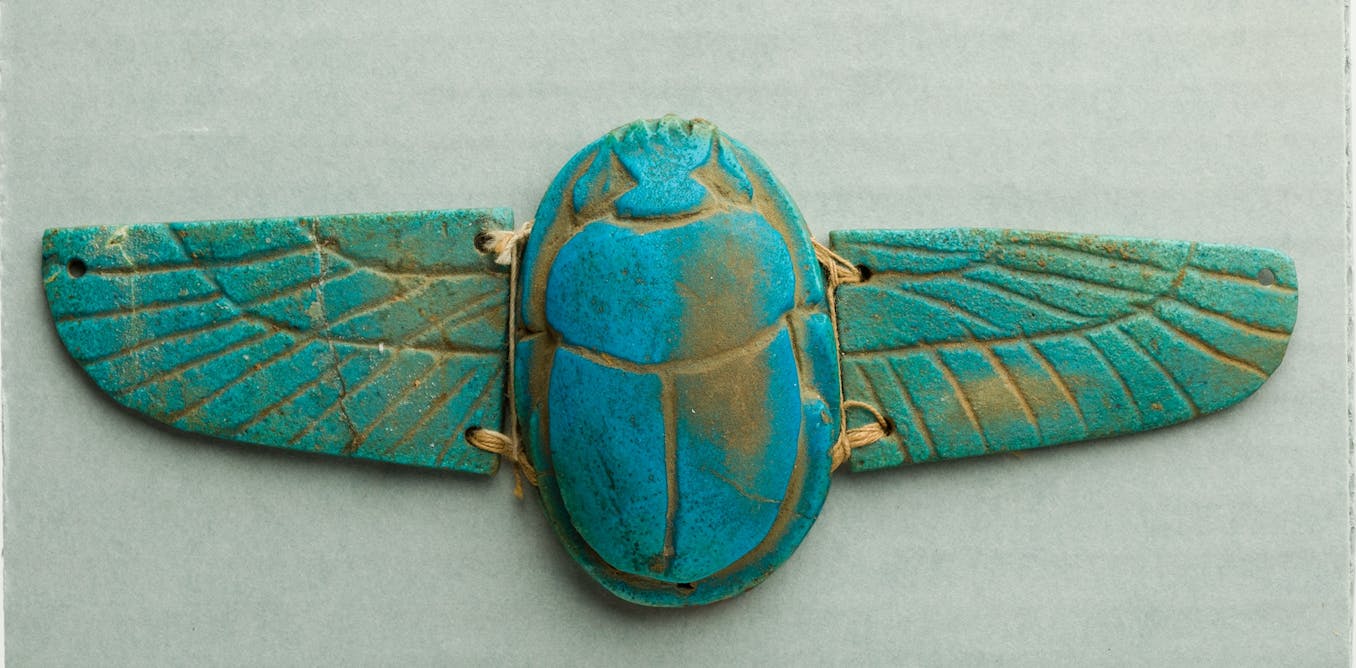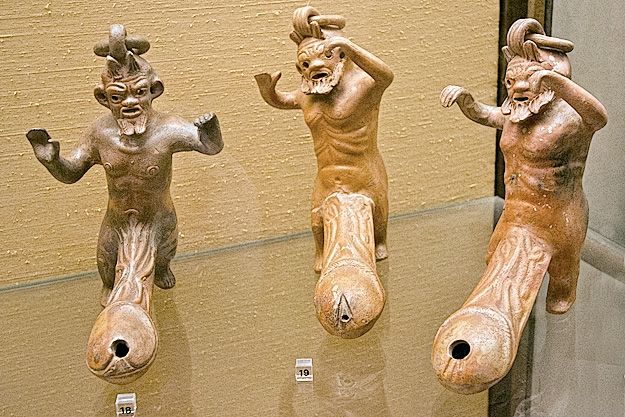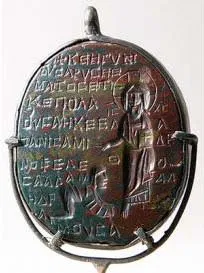
THE FASCINATING HISTORY OF AMULETS
What is an Amulet, Exactly?
The word 'amulet' originates from the Latin word 'amulētum', and it was used by Pliny the Elder (23-79 CE) to denote an item worn on the body for therapeutic, apotropaic or exorcistic benefit. Definitions vary, and 'charm' is often used synonymously with 'amulet.' Still, nuances and variations in the use and meaning of amulets can be found across cultures.
The Fascinating History and Significance of Amulets
Amulets are fascinating objects that have played a significant role in various cultures, religions and belief systems throughout history, evolving from potent charm, to jewellery combining beliefs, status and power, to a social facilitator that speaks to your personal story and is an important tool in your fashion artillery.
Throughout history amulets have been used in many ways to protect against evil spirits, bring good luck, and offer a sense of power and status. Amulets were even considered stock in trade for early medical practitioners and is also cornerstone to crystal healing methodologies.
In ancient Egypt, amulets were often made of materials such as gold, silver, and precious stones, and were believed to protect the wearer from evil spirits and bring good luck. The ancient Greeks and Romans also used amulets, often in the form of small figurines or coins, to protect against illness and bring good fortune.
The Power of Amulets
Amulets have been used for protection and good luck for thousands of years. In ancient times, people would often use natural objects like stones, shells, or animal bones as amulets to ward off evil spirits and provide protection in dangerous situations. Amulets were believed to have special powers because they were thought to be imbued with the spirit of gods, other supernatural beings, mythical creatures or the natural power and traits of an animal. These early amulets were simple and functional, and their protective power was believed to come from the natural properties of the organic materials they were made from as well as the shapes and symbols carved into the materials.
Native American tribes often used amulets using the symbolism of organic materials such as animal teeth, bones, and feathers to bring good luck and protection. The Vikings, on the other hand, used amulets made of materials such as bronze, iron, and gold, to make necklaces and bracelets that featured intricate designs and symbols believed to bring good luck, protection, and strength to the wearer.
Amulets As Symbolic Objects of Meaning and Purpose
Each amulet begins with a choice of organic material that conveys specific symbolism or meaning which gives it its fundamental power. The raw material would also be carved into meaningful shapes or inscribed with symbols to enhance their power and meaning. Wearing the amulet as a necklace or bracelet would keep the connection to that meaning and symbolism with you at all times.
A great example is the oldest amulet ever discovered which was made of the perforated teeth of a cave bear, found in a cave in the Altai Mountains of Siberia and that date back around 40,000 years. The teeth were likely worn as a necklace or bracelet by early humans and are believed to have had protective or shamanic significance.

Some Historical Examples of Amulets
Neolithic jade axe pendant:
Discovered in China, this amulet was made of jade and shaped like a miniature axe. It was worn by Neolithic men as a symbol of power and status, and it was believed to have protective powers against illness and evil spirits. The jade axe pendant was also a symbol of the connection between the living and the dead, as it was often buried with the deceased as a way to ensure their safe passage to the afterlife.
Viking Mjolnir pendant:
This Viking amulet was worn as a pendant and was made of silver or bronze, shaped like Thor's hammer, the Mjolnir. It was a popular symbol of strength and protection in Viking culture, and it was worn by both men and women as a talisman against evil spirits. The Mjolnir was also believed to represent Thor's power to bless and consecrate, and it was a symbol of loyalty to the god of thunder.

Egyptian scarab amulet:
Made of faience or stone and shaped like a beetle, this Egyptian amulet was a popular symbol of rebirth and regeneration in ancient Egypt, and it was often worn by men as a symbol of good luck and protection. The scarab amulet was also associated with the god Khepri, who was believed to be the creator of the universe and the god of the rising sun.

Greek phallic amulet:
This amulet was made of various materials, including bronze and bone, and was shaped like a phallus. It was worn by ancient Greek men as a symbol of fertility and masculinity, and it was believed to offer protection against the evil eye. The phallic amulet was also associated with the god Dionysus, who was the god of wine, fertility, and ecstasy.

Roman intaglio ring:
Rings were commonly worn as amulets and made of gold or silver and featured a carved image, known as an intaglio, on a gemstone. It was often worn by Roman men as a symbol of power and status, and the image on the ring would often depict a mythological figure or symbol associated with Roman culture. The intaglio ring was also a symbol of the owner's allegiance to their social group or political affiliation, and it was often used as a seal to authenticate important documents.

How Amulets Evolved into Jewellery
As societies became more complex, amulets began to take on more than just protective significance. The amulet began to evolve into jewellery that combined the metaphysical and material realms making them more powerful and key to how we communicate many things.
Amulets were often created with intricate designs and craftsmanship, making them no longer just functional but also beautiful pieces of jewellery that then became symbols of status and power. Rulers and high-ranking officials would often wear amulets as a sign of their authority and as a way to show their connection to the gods.
Amulet jewellery allowed people to display their beliefs and status in a more visible and decorative way. The use of precious metals and gemstones in amulet jewellery also added to their value and status but this combination of the metaphysical and material allowed each piece to communicate volumes of personal information making them the earliest example of jewellery as a social-facilitator that communicated your personal story and denoted your tribe.
A wonderful modern example of this are the beaded amulets that the Maasai tribe of East Africa are known for, worn by both men and women as not just symbols of protection and good fortune, but as symbols of power and status.
Conclusion
In conclusion, amulets have a long and rich history that spans many cultures and civilizations. They have played a significant role in various religions and belief systems, and are still widely used today as a symbol of protection and good luck.
Amulets are designed to be touched and held. Hand crafted natural stones, organic gems and recycled precious metals that are so tactile, they will elevate your mind, restore your spiritual equilibrium and soothe your soul.
© 2025 Created by Tara.
Powered by
![]()